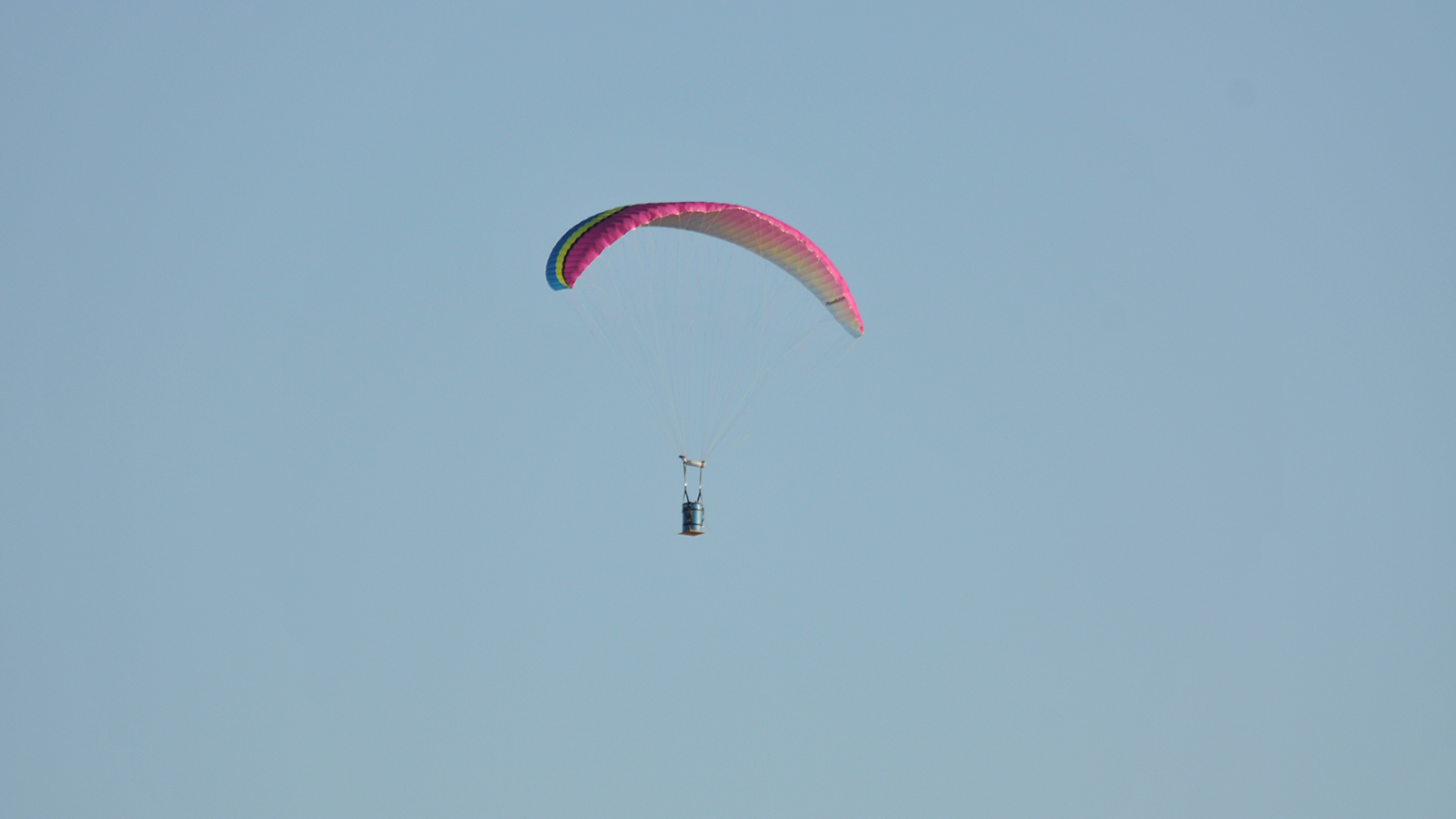Stay Up to Date
Submit your email address to receive the latest industry and Aerospace America news.
The Aerodynamic Decelerator Systems Technical Committee focuses on development and application of aerodynamic decelerator systems and lifting parachutes, pararotators, and inflatables for deceleration, sustentation and landing of manned and unmanned vehicles.
The U.S. Army in June conducted a series of airdrops at Yuma Proving Ground in Arizona to demonstrate a technique for releasing four Joint Light Tactical Vehicles from a C-17, compared to two by the conventional method of having an extraction parachute pull each vehicle off the aircraft before the main parachutes deploy. JLTVs are heavier and larger than the High Mobility Multipurpose Wheeled Vehicles they are replacing, so while a C-17 can fit eight Humvees, currently only two JLTVs can be deployed from a C-17. Initial attempts to deploy four JLTVs at a time prevented the use of extraction parachutes, because the JLTVs and their platforms could strike the top of the cargo bay when exiting the C-17. The Army Combat Capabilities Development Command Soldier Center, or DEVCOM-SC, began looking for a solution last year with funding from U.S. Transportation Command. The decision was made to pitch the nose of the aircraft up 4 to 7 degrees so that gravity would extract each vehicle. During the drop tests, two four-door JLTVs and two weight tubs that simulated JLTVs were released. All payloads were deployed smoothly, and the JLTVs were fully operational after landing under their parachutes. This test proved that the gravity airdrop method of extraction can double the JLTV delivery capacity of a C-17.
In July, DEVCOM-SC conducted the first experimental deployments of high-glide ratio (greater than 5-to-1) parachute canopies under the Precision and Extended Glide Airdrop System, or PEGASYS, project funded by Transportation Command. The intent of PEGASYS is to demonstrate that powered paragliders can be deployed from military aircraft and carry payloads significant distances to the drop zone, while the aircraft stays far enough away to avoid becoming a target in contested logistics environments. The paraglider wings in the experiment were of a kind used commercially for ground takeoffs and had not been previously deployed from an aircraft. Initial engineering analysis by DEVCOM-SC and the contractor team of Earthly Dynamics of Georgia and Aerial Delivery Solutions of Florida led to several successful deployments. The goal of this testing was to build an initial understanding of paraglider air deployments to integrate these higher performance canopies into airdrop systems as part of DEVCOM SC’s efforts to create multiple options for autonomous long-range precision aerial resupply in contested environments.
In the field of high-altitude airdrops, DEVCOM-SC in March tested airdrop systems at 35,000 feet, also at Yuma Proving Ground. Currently, no system is approved for deployment above 25,000 feet above mean sea level. An upgrade to C-17s created the opportunity for 35,000-foot aerial delivery, which would enhance the safety of the aircraft in contested environments. During the March testing, two different systems were tested. One was a high-velocity container delivery system bundle, a common airdrop cargo system for payloads of up to 2,200 pounds (about 1,000 kilograms) that utilizes a 28-foot ring-slot canopy. The other was the High-Altitude Aerial Resupply System II, a high-altitude deployment/low-altitude canopy for payloads up to 2,000 pounds. HAARS II is a two-stage system that uses a small parachute at high altitudes for payload stability before descending to a much lower altitude — approximately 1,200 feet — where a larger parachute slows the descent for a safe landing. The testing had mixed results with successes and failures for both systems. Challenges for airdrop deployments from high altitudes include changes in deployment dynamics (air density and faster speeds to maintain aircraft lift) and cold temperature impacts on electronics and hydraulics.
Contributors: Shari Dangel, Usbaldo Fraire Jr., John Gildea and Andrew W. Meloni
Stay Up to Date
Submit your email address to receive the latest industry and Aerospace America news.




